Snapdragon 8 Gen 3 vs Dimensity 9300: Generative AI
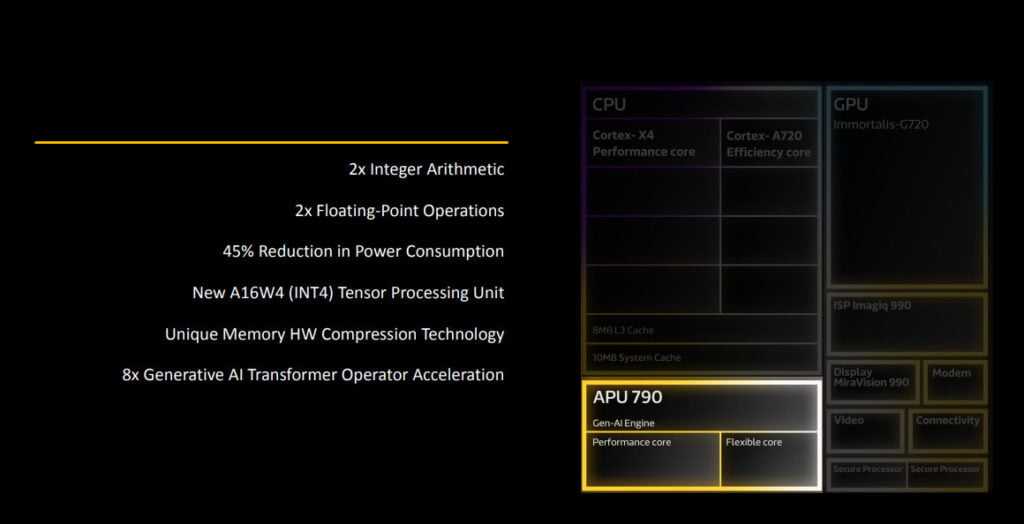
Source: MediaTek
Generative AI is the hot topic around modern flagship chipsets, and both MediaTek and Qualcomm are bringing their best this time around. For the MediaTek 9300, we have a brand new APU 790, which brings double the integer and floating point capability. It also brings a boost in power efficiency with a 45% reduction in power consumption from last year’s Dimensity 9200 chipset.
On top of this, the on-device generative AI capabilities have seen a boost on the Dimensity 9300. According to MediaTek, the APU 790 can run a 7 billion parameter LLM at 20 tokens per second. To get around its power consumption and memory footprint, the APU 790 supports INT4 (A16W4). This allows it to run smaller quantized models, as well as feature a dedicated hardware memory decompression block.
The Dimensity 9300 can extend this to run a 13 billion LLM within 16GB of RAM, with up to 33 billion parameters with 24GB RAM. Of course, it’s a tad slower at 3-4 tokens per second processing rate, but it’s still an impressive showing. Being able to run full-on generative AI on your phone, even with a compressed memory model, is incredibly impressive stuff.
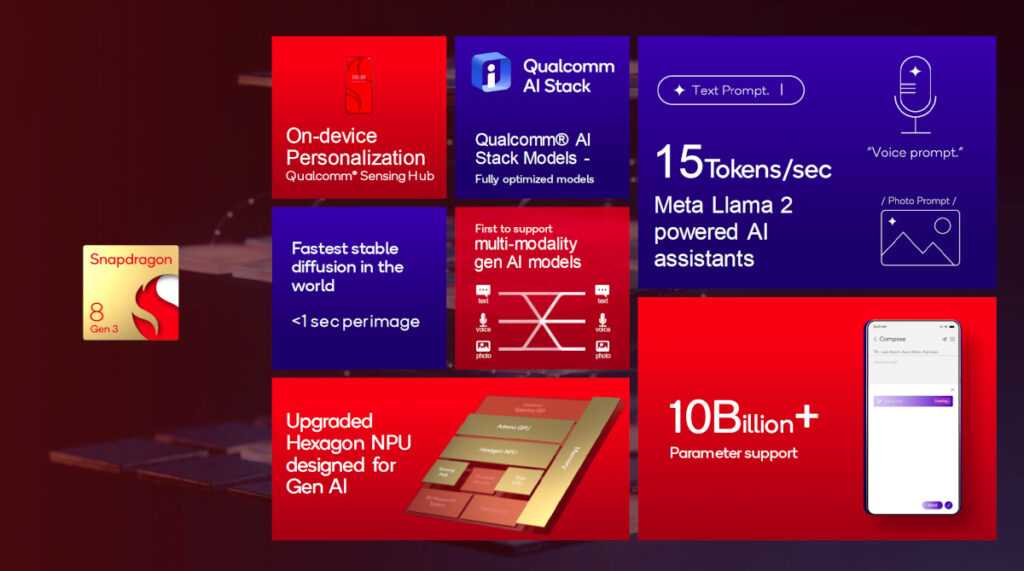
Source: Qualcomm
These numbers are big, though Qualcomm matches these blow for blow. The Snapdragon 8 Gen 3 runs 10 billion parameters on-device with LLM models running to up to 20 tokens per second by default. These are higher numbers than the basic Dimensity chipset, and Qualcomm’s Hexagon NPU works well for it. The chipset also supports Meta’s Llama 2 and Microsoft’s Stable Diffusion, which is great.
Qualcomm doesn’t publish as much technical information on their generative AI details. What we do know is that ultimately, both devices will feature fairly impressive generative AI performance. Both also feature SDK-level support so smartphone manufacturers make use of these features on their devices. You can’t go wrong with either option here.
Snapdragon 8 Gen 3 vs Dimensity 9300: Photography
For photography, MediaTek’s Imagiq 990 ISP returns to its starring role. With 16 object layers of segmentation, always-on HDR capture at 4K, and a dual-lossless zoom hardware engine, there’s plenty here to like. There’s even a dedicated OIS sensor core in the ISP, allowing it to be standalone without sharing resources with other sensors.
Qualcomm is also bringing their A-game in this regard. With a new cognitive ISP with 12 object layer separation, video object erasers via AI, and new technology for HDR video capture, Qualcomm is hoping to present a breakthrough in mobile photography with the Snapdragon 8 Gen 3. We don’t think it’s going to reach that level, but the sheer degree of tech going into this chipset is astounding.
Qualcomm Snapdragon:
Strengths:
- High performance: Snapdragon processors consistently rank among the top performers in benchmark tests, particularly in flagship models.
- Advanced features: Snapdragon processors often incorporate cutting-edge technologies like AI engines, high-resolution video recording capabilities, and advanced graphics processing.
- Strong ecosystem: Snapdragon is the dominant platform for flagship Android devices, leading to broader compatibility and a wider range of supported features.
- Improved modem integration: Qualcomm integrates modems directly into their processors, offering better performance and efficiency in cellular connectivity.
Weaknesses:
- Higher cost: Snapdragon processors tend to be more expensive than MediaTek’s offerings, making them less accessible for budget-minded consumers.
- Overheating issues: Some Snapdragon processors have been reported to experience overheating issues under heavy load, potentially impacting performance and battery life.
- Not optimized for the mid-range segment: Snapdragon’s focus on high-performance processors may result in less emphasis on optimization for the mid-range segment.
What is 3DMark Wild Life Extreme?
3DMark Wild Life Extreme is a new benchmark that was released in May 2021 by UL Benchmarks. It is designed to test the graphics performance of high-end devices across Windows, macOS, iOS, and Android platforms. It uses the Vulkan API on Windows and Android, and Metal on macOS and iOS. It renders at 3840 x 2160 resolution, which is four times higher than the original Wild Life benchmark.
According to UL Benchmarks, the Wild Life Extreme benchmark “uses a complex game-like scene with a large number of different objects and effects. The scene is rendered using tessellation, dynamic global illumination, shadows, bloom, depth of field, and particles. The test uses forward rendering with clustered shading and adaptive quality. The test automatically adapts the level of detail to ensure a consistent frame rate across different devices.
The Wild Life Extreme benchmark produces a single score that reflects the average frame rate achieved during the test. A higher score means better performance. The benchmark also provides a chart that shows how the device manages performance and heat during heavy use. This is useful for evaluating the thermal throttling behavior of the device.
The MediaTek supports a higher megapixel count for a single camera
Now, we all know that megapixels aren’t everything but if you’re reading a comparison between two chips then you’re obviously mightily interested in raw numbers.
The MediaTek 9300 chip is able to support up to 320MP on a single camera, while the Snapdragon 8 Gen 3 is limited to a 200MP single shooter.
However, Qualcomm does bite back with what it can offer across other camera features, including 108MP with zero shutter lag, 64MP and 36MP with zero shutter lag and 3x 36MP with zero shutter lag.
The video capabilities of the Snapdragon 8 Gen 3 also offer 8K/30fps HDR video, but this is matched by the MediaTek 9300. However, the Snapdragon can hit 4K/120fps compared with just 4K/60fps on its key rivals.
Different approaches on big and little cores
Despite both of these chips being based on the same Arm 4nm architecture, the MediaTek Dimensity 9300 and Snapdragon 8 Gen 3 are set to differ quite a bit in how they perform in different tasks. That’s all because they approach the types of computing cores they use in different ways.
The MediaTek has a bigger focus on performance, with all of its cores being what you’d call “big” or “medium” and that means all the cores are the type typically used for high-demand tasks, rather than using more efficient “little” or “small” cores.
By comparison, Qualcomm goes for the more typical approach with a mix of “big” cores and “little” cores, with the latter being deployed for lower-demand tasks.
Things get a bit confusing as MediaTek still defines its 4x Cortex-X4 cores (up to 3.25GHz) as performance cores and its smaller 4x Cortex-A720 cores (up to 2.0GHz) as efficiency cores. And, typically, big and little can often be used interchangeably with performance and efficiency but, in this case, MediaTek’s efficiency cores offer more performance than your typically “small” core, as such it is designated a “medium” core by Qualcomm.
So, on the Snapdragon 8 Gen 3 side, you get one big core, five medium and two little. More specifically these are 1x Cortex-X4 (up to 3.3GHz), 3x Cortex-A720 (3.2GHz), 2x Cortex-A720 (3GHz) and 2x Cortex-A520 Refresh (2.3GHz). You can see, when comparing the types of cores that Snapdragon and the MediaTek share, that the 8 Gen 3 has higher processing speeds.
The combinations will make for interesting analysis in testing as the Snapdragon is a more traditional approach, just with boosted power compared with the previous model, while MediaTek is trying something a bit different.
Snapdragon 8 Gen 4
Компания Qualcomm, мировой лидер в области мобильных чипсетов, в очередной раз поднимет планку, выпустив Snapdragon 8 Gen 4
Этот процессор станет важной вехой в портфолио компании, предлагая множество передовых функций и возможностей
Ожидается, что Snapdragon 8 Gen 4 будет производится по передовому 3-нм техпроцессу TSMC, что гарантирует высокую энергоэффективность. Этот техпроцесс позволяет разместить больше транзисторов на меньшей площади, что сделает его более мощным без повышения тепловыделения.
Для Snapdragon 8 Gen 4 компания Qualcomm использовала улучшенную собственную архитектуру. Она оптимизирована для достижения максимальной производительности и энергоэффективности, что дает процессору значительное преимущество при решении ресурсоемких задач.
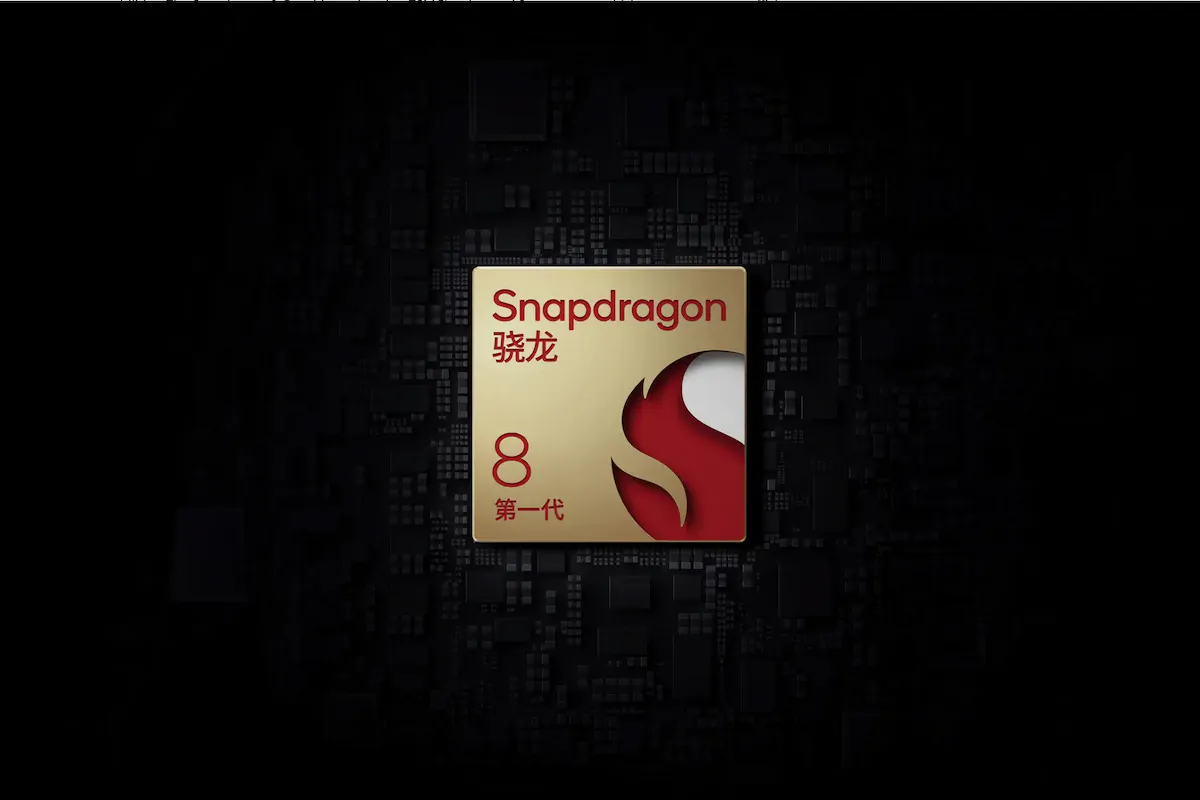
Snapdragon 8 Gen 3 vs Dimensity 9300: GPU
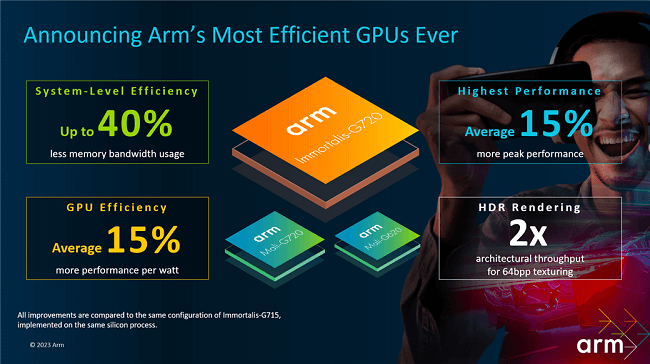
Source: ARM
The MediaTek Dimensity 9300 comes with a new 12-core ARM Immortalis-G720 GPU. Thanks to the new improvements, MediaTek boasts a 23% peak performance improvement over the 9200 and up to a 46% ray tracing uplift. Efficiency has also seen a large boost, with a 46% reduction in power consumption. There’s support for WQHD displays of up to 180Hz, and 4K displays at 120Hz.
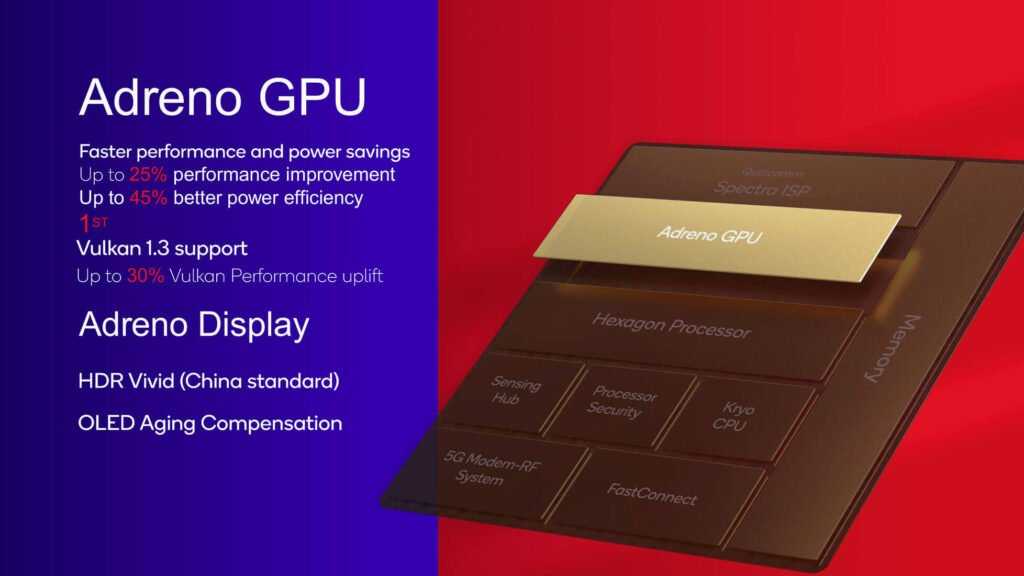
Source: Qualcomm
Over in the Qualcomm stable, The Snapdragon 8 Gen 3 brings support for 240Hz refresh rates and 8K resolutions, albeit only when outputting to an external screen. Otherwise, the refresh rate maxes out at 144Hz at QHD+ resolutions or 4K/60Hz. The new Adreno GPU is 25% faster in performance and 25% more power efficient than previous iterations as well. Outside of this, Qualcomm has also improved the hardware-based ray tracing by 40% and added support for Unreal Engine 5 Lumen.
Specifications
Full list of technical specifications of Snapdragon 8 Gen 3 and Dimensity 9300
CPU
| Architecture | 1x 3.3 GHz – Cortex-X43x 3.15 GHz – Cortex-A7202x 2.96 GHz – Cortex-A7202x 2.26 GHz – Cortex-A520 | 1x 3.25 GHz – Cortex-X43x 2.85 GHz – Cortex-X44x 2 GHz – Cortex-A720 |
| Cores | 8 | 8 |
| Frequency | 3300 MHz | 3250 MHz |
| Instruction set | ARMv9.2-A | ARMv9.2-A |
| L3 cache | 12 MB | 18 MB |
| Process | 4 nanometers | 4 nanometers |
| Transistor count | – | 22.7 billion |
| Manufacturing | TSMC | TSMC |
Graphics
| GPU name | Adreno 750 | Mali-G720 Immortalis MP12 |
| Architecture | Adreno 700 | Valhall 5th gen |
| GPU frequency | 770 MHz | 1300 MHz |
| Execution units | 2 | 12 |
| Shading units | 1536 | 192 |
| Total shaders | 3072 | 2304 |
| FLOPS | 4730.8 Gigaflops | 5990.4 Gigaflops |
| Vulkan version | 1.3 | 1.3 |
| OpenCL version | 2.0 | 2.0 |
| DirectX version | 12.1 | – |
Memory
| Memory type | LPDDR5X | LPDDR5T |
| Memory frequency | 4800 MHz | 4800 MHz |
| Bus | 4x 16 Bit | 4x 16 Bit |
| Max bandwidth | 77 Gbit/s | 76.8 Gbit/s |
| Max size | 24 GB | 24 GB |
Multimedia (ISP)
| Neural processor (NPU) | Hexagon | Yes |
| Storage type | UFS 4.0 | UFS 4.0 |
| Max display resolution | 3840 x 2160 | 3840 x 2160 |
| Max camera resolution | 1x 200MP | 1x 320MP |
| Video capture | 8K at 30FPS, 4K at 120FPS | 8K at 30FPS, 4K at 60FPS |
| Video playback | 8K at 30FPS, 4K at 120FPS | 8K at 30FPS, 4K at 60FPS |
| Video codecs | H.264, H.265, AV1, VP8, VP9 | H.264, H.265, AV1, VP9 |
| Audio codecs | AAC, AIFF, CAF, MP3, MP4, WAV | AAC LC, MP3, HE-AACv1, HE-AACv2, FLAC |
Connectivity
| Modem | Snapdragon X75 | – |
| 4G support | LTE Cat. 24 | LTE Cat. 24 |
| 5G support | Yes | Yes |
| Download speed | Up to 10000 Mbps | Up to 10000 Mbps |
| Upload speed | Up to 3500 Mbps | Up to 7000 Mbps |
| Wi-Fi | 7 | 7 |
| Bluetooth | 5.4 | 5.4 |
| Navigation | GPS, GLONASS, Beidou, Galileo, QZSS, NAVIC | GPS, GLONASS, Beidou, Galileo, QZSS, NAVIC |
Information
| Announced | October 2023 | November 2023 |
| Class | Flagship | Flagship |
| Model number | SM8650-AB | – |
| Official page | Qualcomm Snapdragon 8 Gen 3 official site | Mediatek Dimensity 9300 official site |
Connectivity
WiFi & Bluetooth
The Snapdragon 8 Gen 3 and Dimensity 9300 both incorporate WiFi 7 and Bluetooth 5.3 connectivity for the fastest possible wireless speeds and advanced features. This includes speeds up to 5.8Gbps over WiFi 7 along with ultra low latency.
Cellular Modem
The Snapdragon 8 Gen 3 utilizes Qualcomm’s cutting-edge Snapdragon X75 5G modem. This delivers theoretical peak download speeds up to 10Gbps along with advanced carrier aggregation across all key global 5G spectrum bands.
Meanwhile, the Dimensity 9300 has an integrated 5G modem supporting sub-6GHz networks. It tops out at 7Gbps peak downloads and offers mainstream 5G connectivity.
So the Snapdragon 8 Gen 3 delivers faster next-generation mmWave 5G support in applicable markets like the USA, while the Dimensity 9300 still provides fast sub-6GHz 5G suitable for most users globally.
Cameras
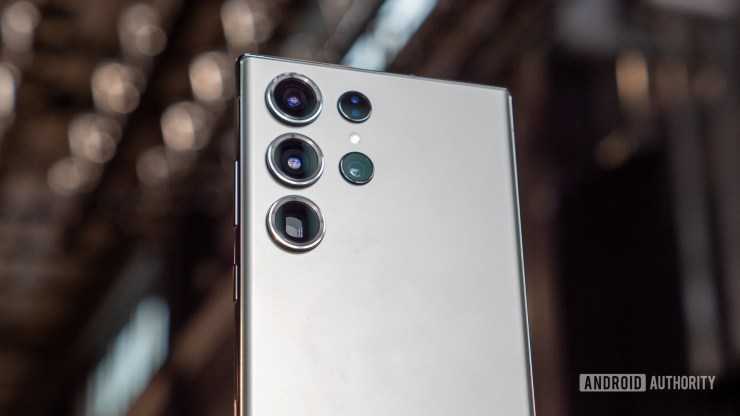
Ryan Haines / Android Authority
Between multi-camera setups, ultra-high-resolution sensors, 8K recording, and computational photography, the modern smartphone camera experience is nearly indistinguishable from the first mobile cameras. MediaTek and Qualcomm are both upping the ante with their new chips, though.
Starting with MediaTek, the Dimensity 9300 tightly integrates its AI silicon with its ISP. This means you can expect up to 16 layers of object segmentation (even when recording videos), always-on HDR for 4K video recording, 4K/30fps bokeh video with automatic tracking, and a dedicated OIS core. We also get a dual-lossless zoom hardware engine for improved image quality when using cropped zoom. This should be a boon in light of the growing trend of smartphones using their main cameras for cropped zoom. Finally, we also get “HDR audio noise reduction” tech, although it’s unclear whether this is the equivalent of Google’s Audio Magic Eraser or something less exciting.
The Snapdragon 8 Gen 3 goes all-in on generative AI camera features, while the Dimensity 9300 refines the fundamentals.
The Snapdragon 8 Gen 3 maintains the same core photo and video resolution support as last year. That includes 8K HDR video support and 200MP single camera capabilities. Qualcomm is, however, using generative AI to enable several camera-related features. The most notable feature is so-called Photo Expansion, allowing you to use generative AI to expand the borders of an image (effectively zooming out). The company also showed off a Video Magic Eraser feature (letting you erase objects and subjects from a video) as well as video capture with generative AI backgrounds.
We also have some more notable features here, such as Night Mode Video support (recording a video with AI enhancements at 4K/30fps and then converting it to 4K/60fps), real-time semantic image segmentation of up to 12 objects in photos/videos, Samsung’s Zoom Anyplace tech, and a Vlogger’s View feature. We also get TruPic support for authenticating images and Dolby HDR photo capture capabilities.
Both phones also ship with support for Google’s Ultra HDR photo standard. This should enable more vibrant images while still using the JPEG file format for maximum compatibility.
Either way, it’s clear that the Snapdragon 8 Gen 3 has some crazy features on board here. But the MediaTek SoC enjoys quite a few less exciting but still practical features. The real question in this regard is just how many smartphones will actually use all these capabilities.
Snapdragon 8 Gen 3 versus Dimensity 9300: Which is better?
We haven’t gotten our hands on commercial phones with these processors just yet, making it impossible to choose a winner right now. Nevertheless, we do have an idea of what to expect in some areas.
MediaTek looks likely to dominate as far as multi-core CPU performance goes, while the company’s own benchmarks tentatively suggest that graphical power is superior to the competition. Toss in some practical camera additions and powerful AI capabilities, and there’s a lot to like.
Snapdragon 8 Gen 3 or Dimensity 9300?
3 votes
Snapdragon 8 Gen 3
67%
Dimensity 9300
33%
However, the Snapdragon 8 Gen 3 brings more advanced connectivity features, similarly powerful AI support (with better partner support), a beefy GPU that enthusiasts prefer, and loads of AI-enabled camera features. MediaTek’s decision to only go with big and medium cores could also potentially leave the door open for Qualcomm’s processor to offer a more efficient design in general. We also believe that the Snapdragon 8 Gen 3 could bring better single-core CPU performance.
The Xiaomi 14 series is the first phone with the Snapdragon 8 Gen 3 chipset, and it’s already out in China. Otherwise, the first Dimensity 9300 phone is set to be the vivo X100 series, and it’s scheduled to launch in China on November 13. Global availability is another story altogether, but we typically see the first devices launching outside China in Q1.
Когда мы увидим смартфоны на базе Dimensity 9300?
Учитывая, что американский рынок прочно занят компаниями Apple и Samsung, а остальную часть составляют Google и некоторые другие, которые создают свои собственные чипы или используют Snapdragon, мы вряд ли увидим много релизов в США и Европе.
Тем не менее, Dimensity 9300, скорее всего, будет использоваться в ряде телефонов от китайских брендов, которые выйдут на мировые рынки в ближайшие месяцы и в течение 2024 года.
Метки: Dimensity 9300, Mediatek, обзор, процессор
Об авторе: MiMaster
Привет, меня зовут Тимур. Я с детства увлекался компьютерами и IT-Индустрией, мне это нравится, это моя страсть. Последние несколько лет глубоко увлёкся компанией Xiaomi: идеологией, техникой и уникальным подходом к взрывному росту бизнеса. Владею многими гаджетами Xiaomi и делюсь опытом их использования, но главное — решением проблем и казусов, возникающих при неожиданных обстоятельствах, на страницах сайта mi-check.ru
Qualcomm и MediaTek, возможно, будет сложно заменить
Мы поговорили с ведущими отраслевыми аналитиками, которые поделились своим мнением о том, почему компаниям, производящим смартфоны, занимающимся разработкой чипов, может быть трудно искоренить Qualcomm и MediaTek. Все они однозначно согласны с тем, что сложно мгновенно повторить тот же успех, что и Qualcomm и MediaTek, поскольку компаниям может потребоваться несколько лет, чтобы получить такой же опыт, как эти гиганты.
Ави Грингарт, президент и ведущий аналитик Techsponential, говорит нам: «Разработка собственного кремния – это сложная и дорого, но может стать отличным способом выделить ваше устройство и, если объемы достаточно велики, может улучшить поля. Однако конкуренция жесткая: Apple устанавливает очень высокую планку, а Qualcomm и MediaTek изо всех сил стараются не отставать. Если ваш собственный чип не обеспечивает такую же производительность, функциональность, возможности подключения и мощность эффективности, чем то, что вы можете купить у Qualcomm, MediaTek или Samsung, ваш телефон будет менее конкурентоспособным, не более. ”
Грингарт уточняет, что чипы, выпускаемые только одним брендом, могут быть не только менее жестокими, чем у конкурентов, но также будут более дорогими в производстве и масштабировании. Единственная компания, которая преуспевает в этом, — Apple, которая устанавливает высокую планку производительности благодаря своим технологиям. Чипы Bionic серии A, в которых используется индивидуальный дизайн, а не просто ребрендинг IP-адресов от ARM, как у других компаний в мире. список.
Тарун Патхак, директор по исследованиям Counterpoint Research, утверждает: «Проектирование чипов — сложная задача. Они стали многофункциональными, и интеграция CPU, GPU, DSP, ISP с оптимизированной производительностью — очень сложная задача для любого . Кроме того, существует проблема интеграции RF и модема с SoC. []Краткий ответ: может потребоваться несколько лет и значительные ресурсы, чтобы достичь… уровня, позволяющего конкурировать с такими компаниями, как MediaTek и Qualcomm».
Патак также подчеркивает, что мастерство Qualcomm в разработке чипсетов, не предназначенных для смартфонов, привело к появлению возможности на сумму 10 миллиардов долларов кумулятивно. К ним относятся усилия компании в области радиочастотных компонентов, автомобилей и других компонентов Интернета вещей.
Навкендар Сингх, директор по исследованиям IDC India, говорит: «Для таких авторитетных игроков, как или Qualcomm, на данный момент это не вызывает большого беспокойства. Вывод собственных чипов на рынок и их масштабирование — дорогостоящий и трудоемкий процесс. И даже после запуска требовалась интеграция, тестирование и приемлемость на рынке. Более того, такие бренды, как Oppo и OnePlus, объединяются, они могут совместно использовать больше ресурсов и, в конечном итоге, также разрабатывать чипы. Однако для этого потребуется еще несколько лет усилий и инвестиций, прежде чем их собственные устройства будут заменены собственными чипами».
Сингх отмечает, что, хотя Qualcomm и MediaTek извлекают выгоду из своего обширного портфеля клиентов, двум производителям микросхем следует с осторожностью относиться к достижениям, исследованиям и разработкам в таких областях, как такие как искусственный интеллект, машинное обучение и технологии камер, особенно когда речь идет о специальных решениях, таких как Google Tensor, которые способны привлечь значительную часть населения лоялисты. Этот дрейф станет причиной беспокойства для Qualcomm и MediaTek
CPU
The Dimensity 9300 features a 1+3+4 CPU configuration:
- 1x Cortex X4 Prime core at 3.25GHz
- 3x Cortex X4 performance cores at 2.85GHz
- 4x Cortex A720 efficiency cores at 2GHz
Meanwhile, the Snapdragon 8 Gen 3 has a 1+3+4 setup:
- 1x Cortex X4 Prime core at 3.19GHz
- 3x Cortex A720 performance cores at 2.96GHz
- 4x Cortex A520 efficiency cores at 2.27GHz
MediaTek claims the Dimensity 9300 delivers up to 40% higher multi-threaded CPU performance versus the prior Dimensity 9200, while using 15% less power at the same performance level.
Qualcomm says the Snapdragon 8 Gen 3 CPU is 30% faster than the prior generation Snapdragon 8 Gen 2.
So, while both deliver strong generational improvements, MediaTek asserts the Dimensity 9300 holds a multi-threaded CPU advantage. We’ll need to benchmark real devices to confirm.
Что будет дальше?
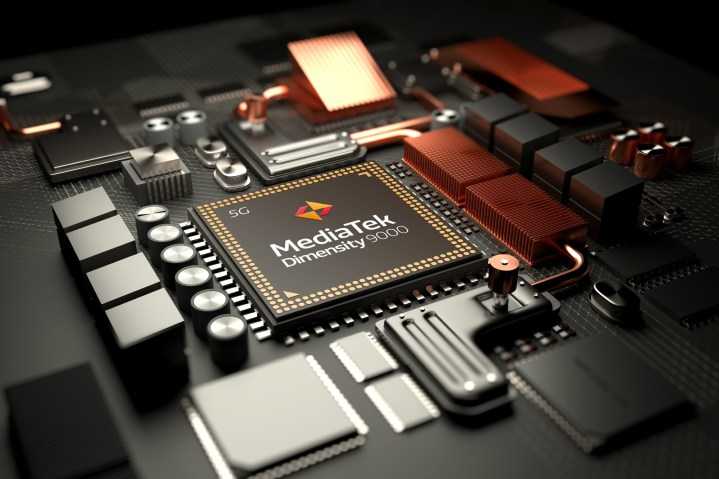 Процессор MediaTek Dimensity 9000 имеет в своем активе несколько новинок. МедиаТек
Процессор MediaTek Dimensity 9000 имеет в своем активе несколько новинок. МедиаТек
Ходят слухи о следующем крупном выпуске чипа MediaTek, который в настоящее время называется Dimensity 9300. Сообщается, что он будет использовать полностью большая конструкция ядра, отходя от привычной нам архитектуры «большое ядро/малое ядро». Это означает, что чип может отказаться от «эффективных» ядер, используемых для небольших базовых задач, и просто использовать комбинацию больших и «производительных» ядер для решения всех задач. Комментарии Мойнихана определенно указывают на то, что именно в этом направлении пойдет компания.
«Архитектура процессора очень отличается. Мы в значительной степени опираемся на большие ядра серии X и серии A7, которые предлагает ARM, а не на маленькие ядра», — сказал он Digital Trends. «Это будет довольно большой шаг вперед в вычислительных возможностях, как одноядерных, так и многоядерных, что принесет преимущества во многих различных случаях использования. Это будет интересная архитектура с вычислительной точки зрения».
Производители микросхем, такие как Qualcomm и Apple, традиционно использовали многоядерную конструкцию со смесью больших и малых ядер, при которой основные задачи передаются менее энергоемким ядрам, оставляя более крупные ядра для выполнения более сложных задач, таких как игры и многозадачность. Итак, в чем преимущество использования всех больших ядер?
Я думаю, что это принесет преимущества во многих различных случаях использования.
« отзывчивость приложений и одновременное выполнение нескольких приложений, он будет иметь преимущества для игр, а также преимущества в случаях использования камеры и видео», — сказал Мойнихан. «Вычислительные преимущества будут полезны для генеративных приложений искусственного интеллекта, который движется быстро, и мы не собираемся оптимизировать все с помощью оборудования Accelerated Processor Unit (APU) для его ускорения. Я думаю, что это принесет преимущества во многих различных случаях использования».
Но как эта новая архитектура будет работать с задачами, которые в настоящее время решаются ядрами меньшей эффективности? Мойнихан представил небольшое представление о мышлении MediaTek:
“Много будет «проснуться, сделать что-то очень быстро, а затем выключиться», и все это будет выполняться с использованием умных методов управления питанием. Вместо того, чтобы использовать ядро среднего размера для выполнения задачи, если вы можете использовать большое ядро в течение некоторого времени, а затем выключить его и выполнить ту же работу, в целом оно может оказаться более энергоэффективным». он объяснил.
Snapdragon 8 Gen 3 vs Dimensity 9300: Performance
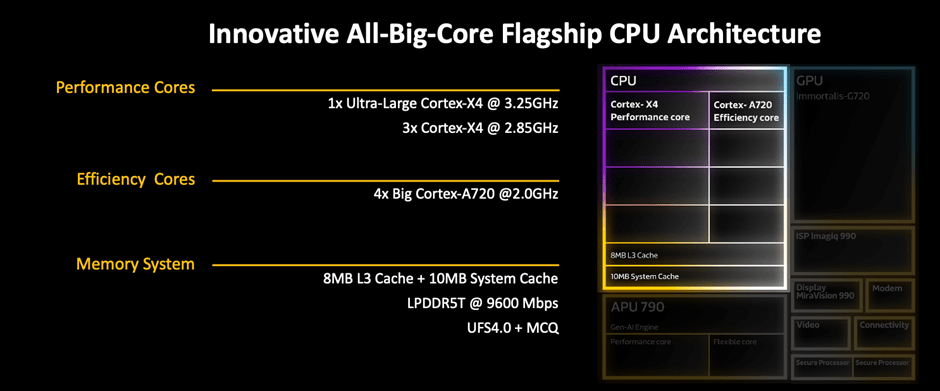
Source: MediaTek
The MediaTek Dimensity 9300’s great claim to fame this time around is the “all BIG cores” statement that MediaTek has been parading everywhere. What this essentially means is that the chipset consists of four Cortex-X4 cores, one clocked at 3.25 GHz, while the others are kept at 2.85 GHz. Four more Cortex-A720 cores, each clocked at 2 GHz, operate in the system.
With this, the MediaTek Dimensity 9300 manages to have nothing but high-performance cores. Yes, the Cortex A720 architecture isn’t necessarily as fast as the Cortex-X4, but the performance levels here are excellent.
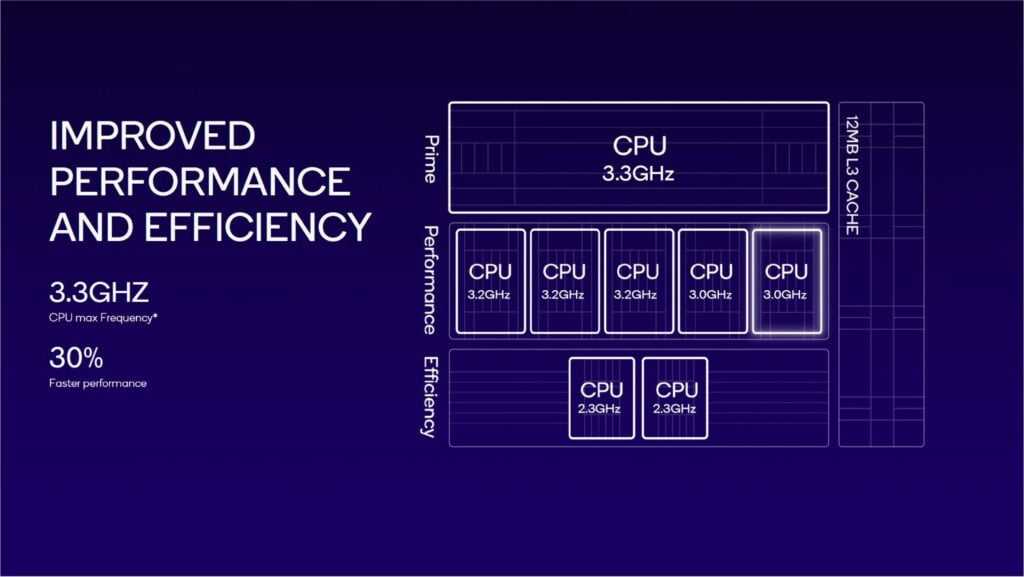
Source: Qualcomm
Compare this with the Snapdragon 8 Gen 3’s cluster of cores. First, we have one high-performance Cortex-X4 core, at 3.3 GHz. Then, we have five Cortex-A720 cores, three of them running at 3.2 GHz, and the other two at 3 GHz. Finally, there are two Cortex A520 cores clocked at 2.3 GHz. In this case, the Cortex A520 cores are the little cores.
Because of this setup, the MediaTek Dimensity 9300 should have better multi-core performance, but similar single-core performance. There are some concerns surrounding the chipset’s power efficiency, as the little cores are meant to keep performance efficient for simpler tasks. MediaTek however claims that having all cores tuned for power allows the chipset to accomplish tasks faster, allowing it to achieve similar levels of efficiency.
Of course, real-world performance remains to be seen, but on paper, the Dimensity 9300 has the performance advantage. Most single-core tasks will run smoothly just like on the Snapdragon 8 Gen 3, but the major difference is in multi-core performance. Thanks to the powerful 4+4 setup, tasks like video rendering and multi-tasking will be faster on the MediaTek solution.
While the numbers on paper are higher for the MediaTek Dimensity 9300, how about benchmark performance? Well, all benchmarks tested on the chipsets so far put the Dimensity 9300 far above its Snapdragon counterpart. It’s a big win for MediaTek, truly taking the lead from Qualcomm for once.
Кто лучше?
Snapdragon 8 Gen 4 и Dimensity 9400 сойдутся в битве гигантов области мобильных процессоров. Оба чипа используют один и тот же передовой 3-нм техпроцесс, обещающий повышенную энергоэффективность и производительность. Qualcomm имеет собственную архитектуру, что дает ей преимущество. MediaTek может предложить конкурентный пакет с лучшими мультимедийными возможностями.
В конечном итоге выбор между этими двумя процессорами может зависеть от предпочтений отдельных производителей устройств и от того, какие именно функции они ставят во главу угла в своих продуктах. Как потребители, мы можем ожидать появления нового поколения высокопроизводительных смартфонов на базе этих чипов, которые обещают более высокую скорость работы, расширенные возможности искусственного интеллекта и исключительный общий пользовательский опыт.
Метки: Dimensity 9400, Snapdragon 8 Gen 4, процессор, чип
Об авторе: MiMaster
Привет, меня зовут Тимур. Я с детства увлекался компьютерами и IT-Индустрией, мне это нравится, это моя страсть. Последние несколько лет глубоко увлёкся компанией Xiaomi: идеологией, техникой и уникальным подходом к взрывному росту бизнеса. Владею многими гаджетами Xiaomi и делюсь опытом их использования, но главное — решением проблем и казусов, возникающих при неожиданных обстоятельствах, на страницах сайта mi-check.ru
Ждать недолго
По предварительным данным, первые устройства на базе Dimensity 9200 будут анонсированы до конца 2022 г. На момент публикации материала ни один из производителей не заявил о готовности использовать данный чип в своих гаджетах, однако CPU MediaTek встречаются в устройствах Xiaomi, Redmi, Realme и многих других брендов, популярных в России и мире.
MediaTek второй год подряд создает передовые CPU
Что до процессора Qualcomm Snapdragon 8 Gen 2, то он будет во многом похож на детище MediaTek, но получит не три кластера ядер, а четыре. Первый – это единственное ядро Cortex-X3 с частотой до 3,19 ГГц, во втором будут находиться два ядра Cortex-A715 до 2,8 ГГц, третий займут два Cortex-A710 с такой же частотой, а еще три ядра Cortex-A510 окажутся в четвертом кластере и смогут работать на частоте до 2 ГГц.
Также сообщается о наличии видеоподсистемы Adreno 740. Пока нет информации, есть ли в ней поддержка трассировки лучей, или эта «фишка» будет уникальной особенностью Dimensity 9200 до релиза Snapdragon 8 Gen 2 ближе к середине 2023 г.


























